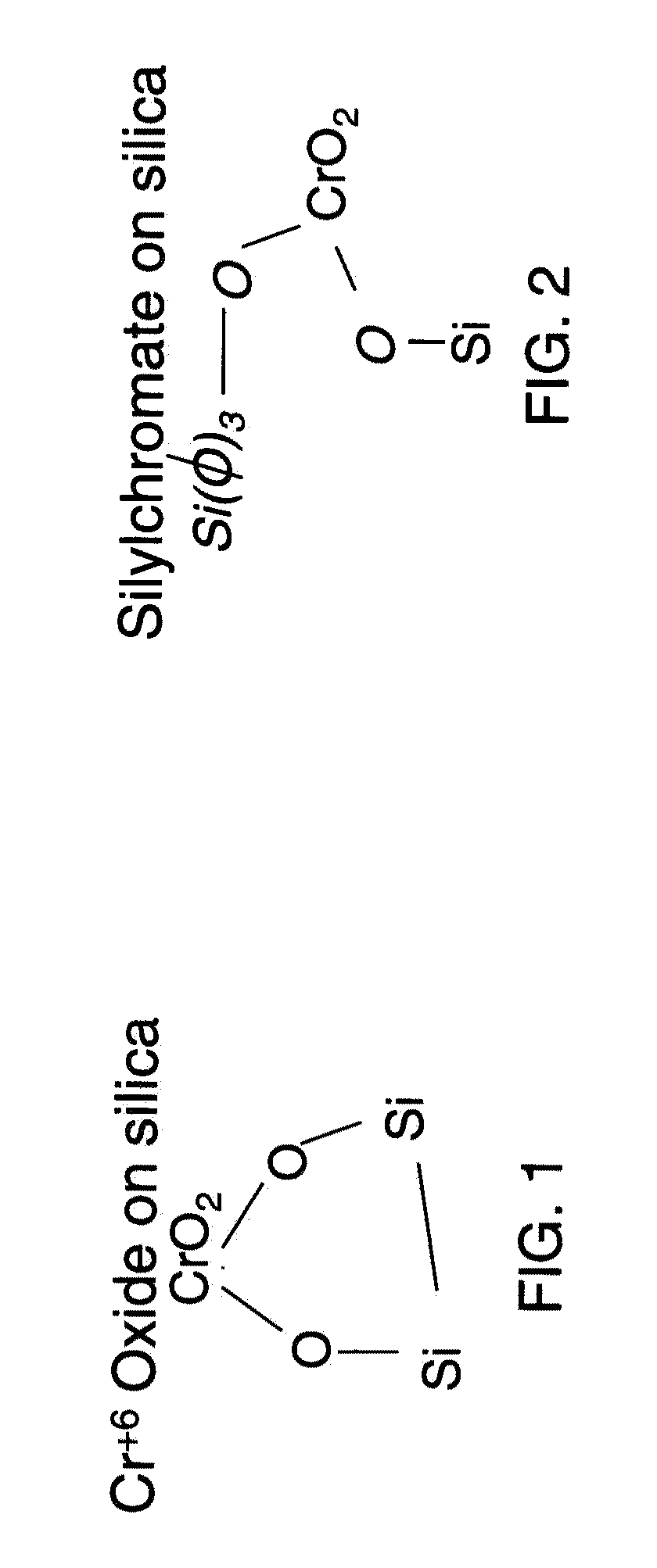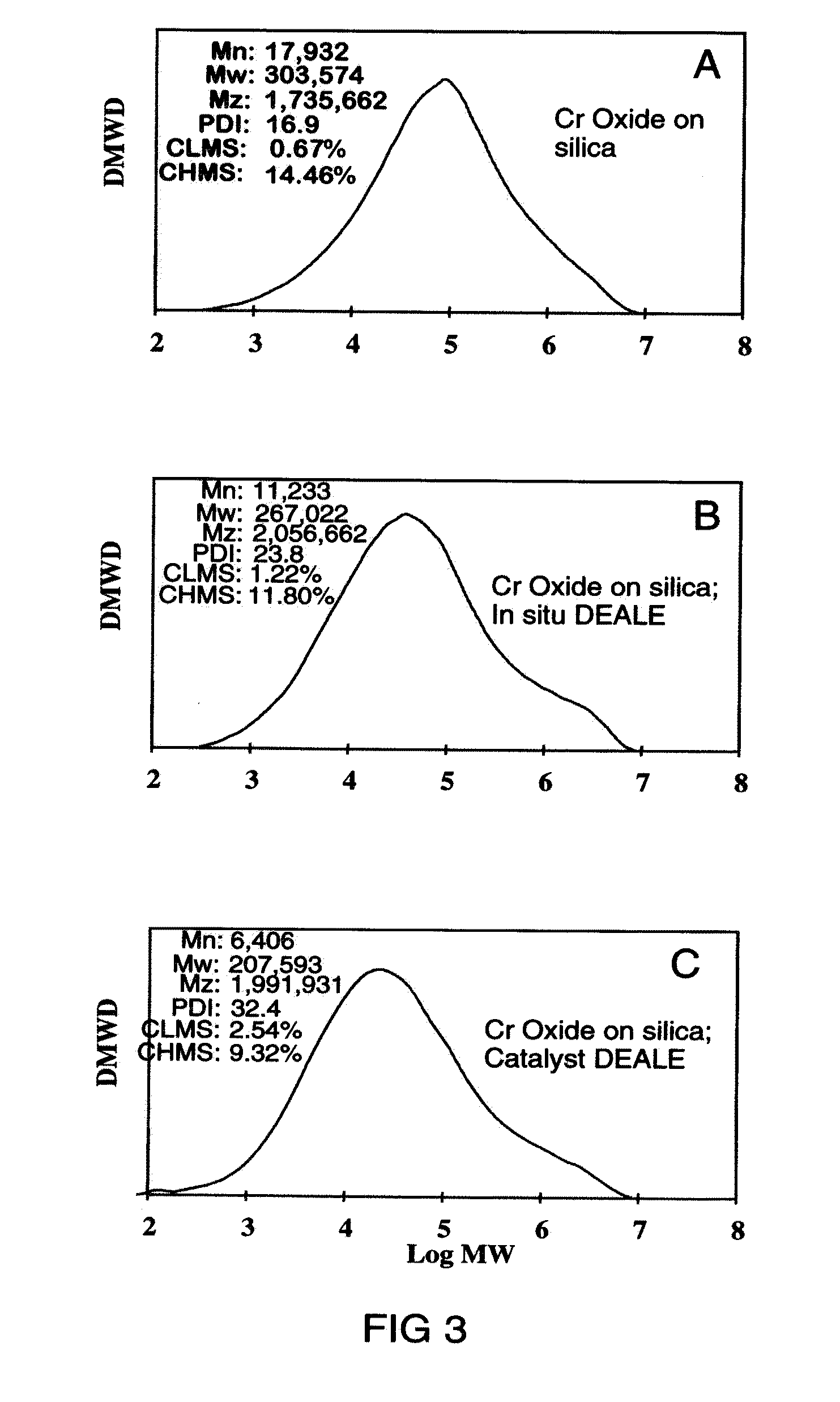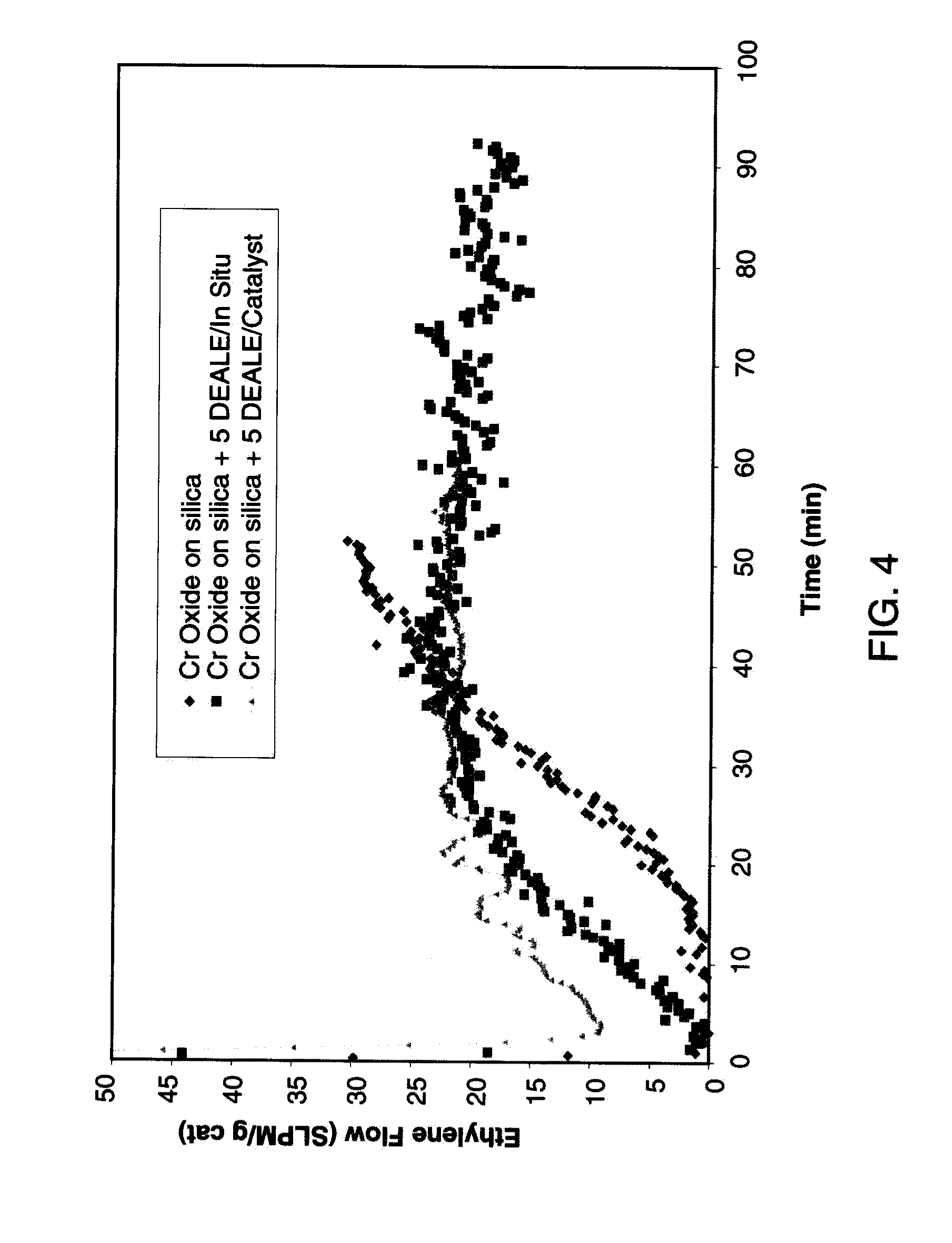Broad Molecular Weight Polyethylene Having Improved Properties
a polyethylene and wide molecular weight technology, applied in the field of ethylene polymer, can solve the problems of reducing reactor throughput and production costs, reducing heat transfer and production rates, and prior art is devoid of any teaching of the use of in-situ addition of aluminum alkyls (directly to the reactor), and achieves short residence times, good productivities and variable control
- Summary
- Abstract
- Description
- Claims
- Application Information
AI Technical Summary
Benefits of technology
Problems solved by technology
Method used
Image
Examples
example 1
[0100]The catalyst was used as supplied by Davison Chemical and consists of 0.5 wt % chromium on Davison 955 silica and was activated at 825C (General preparation A). See silica specifications in Table 2.
examples 2-6
[0101]The catalyst is the same as that used in Example 1 except that reducing agents are added in a catalyst preparation step as in General preparation B. When a mixture of reducing agents are used the mole ratios of each is 1:1.
example 7
[0102]The catalyst consists of 0.5 wt % Cr on Davison 955 silica (200° C. dehydration) treated with titanium tetraisopropoxide prior to activation. Enough TTIP is added so after activation 3.8 wt % Ti remains (see U.S. Pat. No. 4,011,382 for specific procedures for TTIP addition).
PUM
| Property | Measurement | Unit |
|---|---|---|
| melt index | aaaaa | aaaaa |
| temperature | aaaaa | aaaaa |
| density | aaaaa | aaaaa |
Abstract
Description
Claims
Application Information
 Login to View More
Login to View More - R&D
- Intellectual Property
- Life Sciences
- Materials
- Tech Scout
- Unparalleled Data Quality
- Higher Quality Content
- 60% Fewer Hallucinations
Browse by: Latest US Patents, China's latest patents, Technical Efficacy Thesaurus, Application Domain, Technology Topic, Popular Technical Reports.
© 2025 PatSnap. All rights reserved.Legal|Privacy policy|Modern Slavery Act Transparency Statement|Sitemap|About US| Contact US: help@patsnap.com



